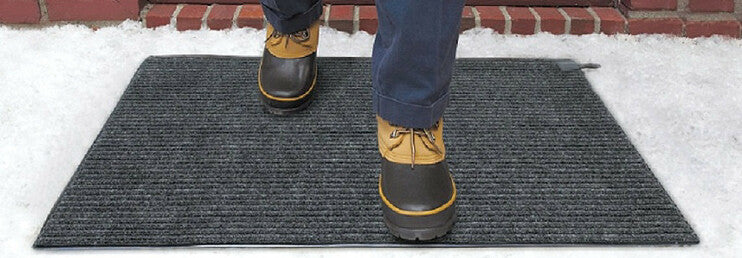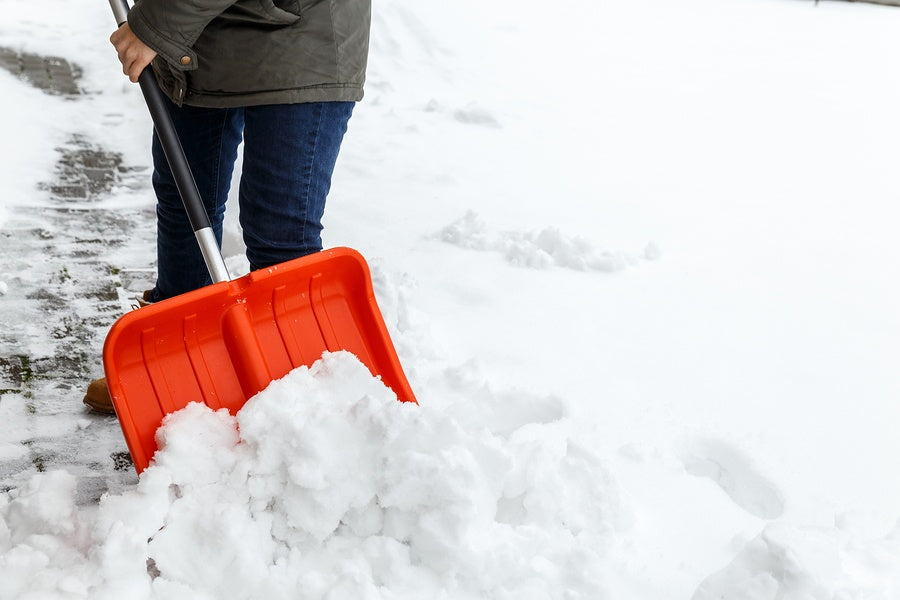
Each year, some 2.8 million seniors are treated in emergency rooms for injuries due to falling, a good percentage of which occur during the icy, slippery months of winter. If you have older folks in your life, you know how worried they can be about slip-and-fall accidents. One of the best ways to protect them from this danger is with entrance mats.
Using entrance mats to maximize safety
Puddles at your doorstep are a major slipping hazard, especially for seniors who can easily lose their balance. Entrance mats will help prevent slip-and-fall accidents by absorbing water that melts off of your shoes after you’ve been outside in the snow and ice.
Place entrance mats both inside and outside every entrance and exit to your home. At your main entrance, put down an entry mat that utilized a three-layer defense system:
- A tough hard plastic or "bristly" mat with thick grooves or ridges, laid just outside the door. This "scraper" style mat will allow for the quick removal of the largest pieces of dirt, ice, salt and snow
- Just inside the doorway, put down a medium-textured mat to remove and trap smaller dirt particles. A rubber, ridged entrance mat or a deep-pile carpet-type mat would work well here
- Put down a "wiper" mat with short, absorbent, fibers. This mat will catch the finest dust particles and dry off the bottoms of footwear
Be sure the mat bottoms firmly grip the floor so the mats will not shift or slide and create a new slip-and-fall hazard. If necessary, use carpet tape to keep mat edges flush with the floor.
Also, make sure the mats cover enough space. Mats that are too small or not absorbent enough can "leak" and cause puddling. Make sure the first two footsteps taken when you enter the building fall on two successive entrance mats.
Keeping the path to your main entrance safe
It’s not just the area immediately inside and outside your doorstep that has the potential for danger. The entire path from driveway to entryway can be hazardous to walk on in winter. Here are some tips on how to make these pathways as safe as possible and prevent accidents while your loved ones are out and about:
- Make sure areas above and around entrance mats are well-lit
- Keep de-icer, a snow shovel, and sand or kitty litter near your entrance area. Use these to de-ice and increase the traction on your walkway
- Lay down seasonal, electrically heated snow melting mats. These can melt up to two inches of snow per hour and prevent melt-off from refreezing into black ice
Advise your loved ones:
- To wear well-insulated, slip-resistant shoes/boots at all times when walking outside during winter
- To walk carefully, especially in ice and snow. Take small steps, always making sure they have traction and balance before taking the next one
- Not to walk over snow or ice while carrying a load that is heavy or unwieldy
Winter weather is especially challenging for seniors, who experience more slip-and-fall accidents during the winter than at any other time of year. Implementing a proper entrance mat strategy, increasing the safety of walkways leading up to your entrance mats, and passing along the above tips will greatly reduce the risk of accidents.


